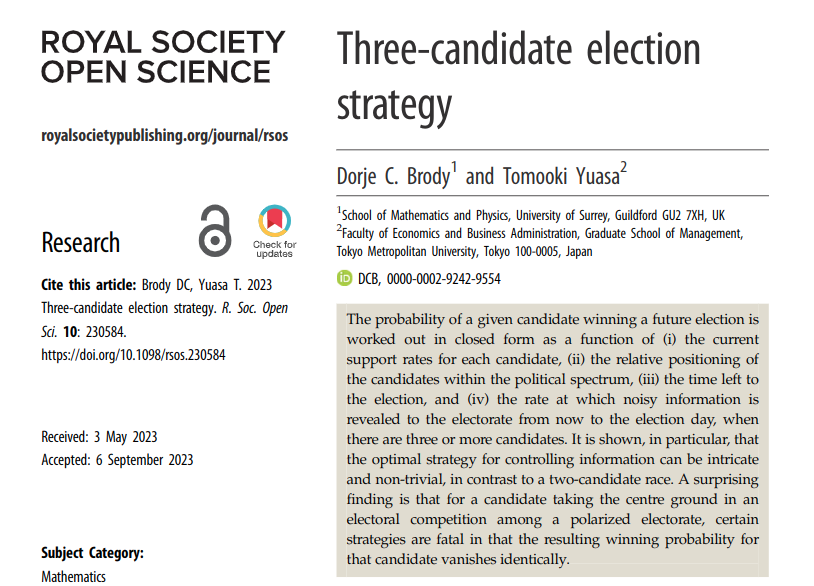The paper “Three-candidate election strategy“, co-authored by Dorje Brody and Tomooki Yuasa (Tokyo Metropolitan University) has been published this week in Royal Society Open Science 10: 230584. The paper is published gold open access (link here). Both the UK general election and the US presidential election are expected to come up next year. Current polls shown in the media give an indication of the candidates’ success rates if the election were to take place today, but what do they tell us about an election to take place a year from now? If the poll says candidate A has 52% support and B has 48% support, then (ignoring the errors of poll statistics) it means that the probability of candidate A winning an election is about 100% if there is an election now, but what if the election is to take place in six months, or a year from now? In that case, intuitively the probability of candidate A winning the election seems closer to 52% than 100%. To interpolate today’s probability and future probabilities, we need a mathematical model. For a model to be useful in the context of an electoral competition, it has to incorporate how information is managed by campaign teams from today till the election day, and how the candidates position themselves within the political spectrum. This paper introduces such a model, and derives formulae for the probabilities of candidates winning a future election, thus interpolating today’s and future’s statistics. Because the formulae are dependent on how information is managed, and on where the candidates position themselves within the political spectrum, campaign teams can use these results to optimise their strategies. A screen shot of the front page of the paper is below.

